How to Write a Documentary Script from Scratch
One of the most debated topics in discussions is whether or not you should script your documentary. There is a common claim that if you script a documentary, then it becomes reality television. What you may not realize is that almost every documentary includes a script or at least a written treatment. The majority of creators follow this approach. This does not mean you hand lines to your subjects or instruct them on what to say word for word. You need to know how to write a documentary script for this purpose.
Create Now!Part 1. How to Write a Documentary Script In the Best Way
1. Choose the Right Format (Structure)
When you write a documentary script, there are different ways to format it. The two most common options are the A/V script and the paper edit.
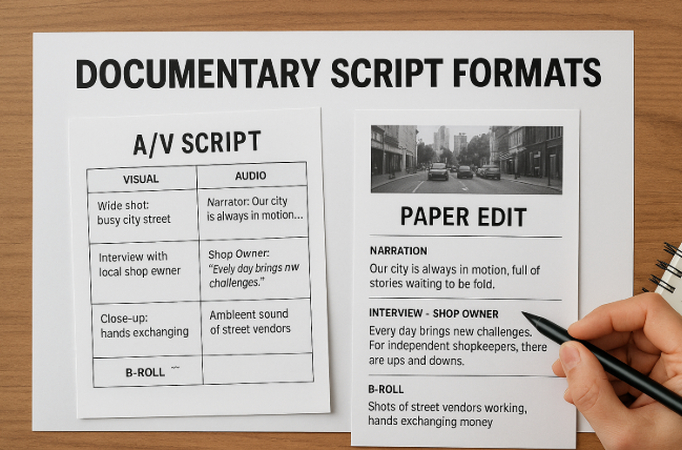
An A/V (Audio/Visual) script splits the page into two columns. One side is for what the viewer will see (the visuals), and the other side is for what they will hear (like narration, interviews, or sounds). This format helps you plan each moment clearly, so the video and audio match well and flow smoothly together.
A paper edit is something you put together in writing after filming. You go through your footage, write out the interviews, and decide which clips to use. Then, you arrange everything in the right order so the story makes sense. This helps you see the full picture and build your story clearly and effectively.
However, writing a documentary script with an open mind for the outcome before you film anything is still the best practice. Although paper edits are great too, you are then totally dependent on what you capture and edit, and you lose the main story or originality of your idea.
2. Define Your Story in One or Two Sentences
Before you begin writing a script, there are a few important things you need to do first. The first step is to define your story in one or two sentences. If you cannot do that, then your story is too complicated.
For example, the story could follow a community project that helps underprivileged youth build confidence through group activities. The film tracks their progress as they work toward their personal goals. Those two sentences explain exactly what the story is about. If you can sum up your story in one or two sentences, then it shows that your concept is simple and clear enough to explain.
3. Pre-Interviews and Character Discovery
Another important step is to conduct pre-interviews with your subjects. This gives you a chance to get to know them and ask questions. These may include questions about their life, their journey, and what they are trying to accomplish.

You should do this with as many people in your documentary as possible. This helps you understand them and their role in the overall story. Once you have all of this done, you are ready to start your script.
4. Predict the Direction of the Story
You cannot fully predict the outcome of your documentary before filming begins. The goal is to give your best guess about where you believe the story might lead. You can begin your script by introducing some of the characters and how their lives are intertwined with each other.

You may start by showing where the subject began, their early life, or the catalyst that got them to embark on this journey in the first place. A story like this may follow people who risk their future to pursue a goal that means everything to them. You should also think about the emotional theme of your story and how to write that into the first act.
5. Introduce the Conflict
Once your characters are introduced and the world of your story is clear, the next step is to bring in the conflict. This is the moment where your subject faces their biggest adversity.
It might be an injury, a personal failure, or a turning point where things begin to fall apart.
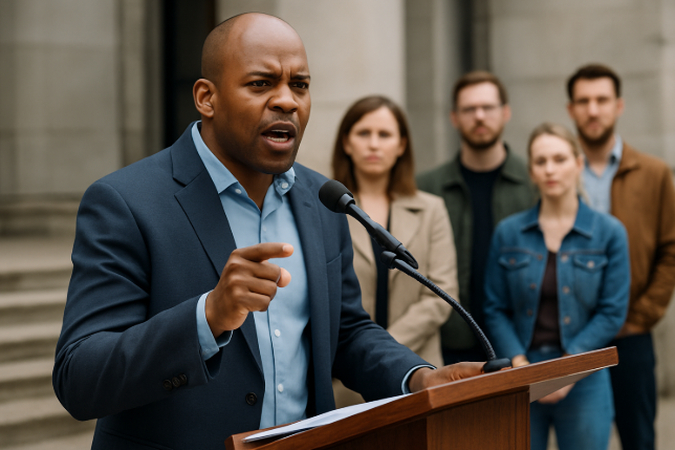
This moment doesn't always arrive on its own, and you might need to frame it through tension, contrast, or build-up. What matters is identifying the problem your subject could face and how they might respond to it.
You are writing a script based on your understanding of how the situation might unfold, even if the real outcome turns out differently. That's why everything in this stage has to stay open. The people in your story might react in ways you didn't expect or face problems you never saw coming, and that's fine. These are starting points that carry you through each phase of the story, and you need to stay flexible as things shift during filming.
6. Show the Character Taking Action
Once the conflict is clear, your character needs to respond. This part of the story focuses on what they do about the problem they face. It could be a challenge, a setback, or a confrontation they can no longer avoid.
This is where you highlight the action, what they try, how they push back, and what it costs them. It might lead up to a final event, like a public announcement or a major choice that affects their future. Whatever form it takes, this moment has to show the character going toe to toe with the obstacle. Even if it doesn't go the way you expected, you still need to script this part so you can follow the emotional thread and recognize when this moment happens during filming.
7. Write the Showdown or Climax
This part of your script includes the final showdown between your character and whatever they face. It could be the last attempt to reach their goal, a moment where everything they prepared for is put to the test, or a decision that changes everything. You do not need to guess the outcome perfectly, but you outline the steps you expect the story to follow.
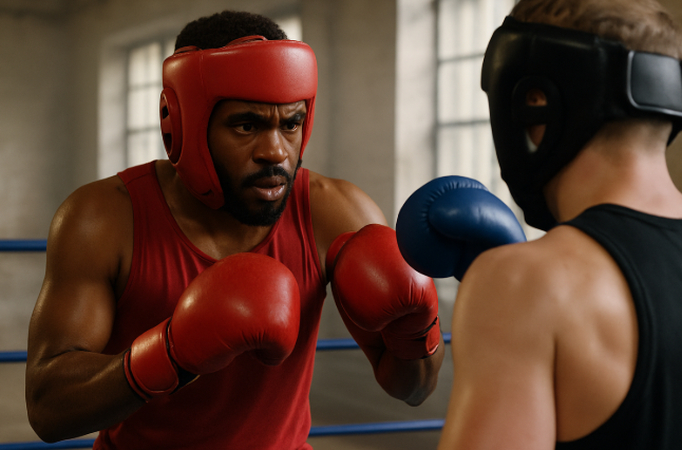
Even if the result is different, you have a structure that lets you follow the emotional thread and capture the key moment. What matters most is that the script shows the weight of this scene and reveals how far the character has come from the beginning.
8. Predict the Ending but Be Open
As discussed above, the ending of your script should explain how you think the story ends, but the results can be different. For example, you might expect someone to reach a turning point, but instead they choose to stop before it happens. Here, you still use what you've written; the structure simply shifts. You do not erase the story but adjust it based on what takes place.
There is a possibility that the unexpected moment becomes the final note. This section helps you to focus on the story's shape rather than forcing the conclusion. You are outlining a direction so you can recognize how it actually plays out. The meaning stays with the subject's actions, not your original guess. A different outcome still supports the tone of the story, and sometimes reveals something stronger. That change only matters if your structure leaves enough room to follow where it leads.
9. Use the Script During Editing Too
If your footage doesn't follow your script perfectly, it still gives you direction. As you edit, you'll realize that a lot of the things that you wrote are still showing up in different ways. For example, people may be saying different words, or the scenes may be unfolding differently, but the main theme is still there.
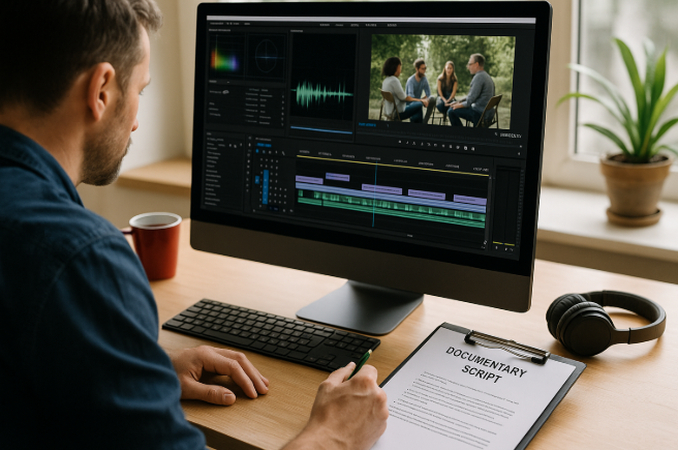
That's why scripting your documentary ahead of time is so important, so you're not editing blindly. You already know what story you're trying to tell. You can move things around, replace certain moments, or cut out things entirely, but the story structure is still there. It saves you time and money, and makes your edit more about refining than trying to fix a broken structure. The script is your guide through that process, though you change everything around it.
10. Don't Force a Message-Let the Story Speak
Good documentary scripts do not push a narrative. They show people, they show events, and they let you take from it what you take. You have to remember that the people in your documentary are what carry the story.
The moment you try to overly inject a message or force a perspective in your writing, it will be fake, manufactured, and scripted, and all of that goes against what a documentary is supposed to be.
If you want to deliver a message that others are meant to follow, make a short film, not a documentary. A documentary is about the truth, and the truth is that not every story has an answer, not every scene has a conclusion, and not every moment has a clear takeaway.
So you should be open about this while scripting. Sometimes scenes you'll shoot fall flat, sometimes they go nowhere, and that is okay. It is your job to know when to pull back and let the scene breathe instead of forcing your script. If you try to control everything, you lose what is real, and that is what people connect to most in a documentary.
11. Be Flexible With All Elements
Finally, every element in your script, such as the intro, conflict, turning point, climax, and ending, must remain flexible. You do not write it in stone. You write it so you know what to look for. If something unusual happens while filming, you should capture that instead. If a key moment does not happen, do not panic. Use what you have written. That is why the script serves as a guide, not a rule. It shapes your plan, helps your crew stay aligned, and allows you to present the story clearly when it changes later.
Part 2. Make Short Videos from Your Scripted Documentary with HitPaw AI Video Generator
Writing a script for your documentary is just the initial phase (Pre-Production) of what you want to show to your audience. You need to film it in a way that is both interesting and engaging. Before you invest anything in the production phase, it might be a good idea to visualize your script in the form of a video.
One way is to capture raw footage, play it back, and see which elements are off. This can result in over-budgeting. Another way is to leverage HitPaw AI Video Generator to feed your documentary script, and it will generate 5 to 8-second short films to help you analyze and give inspiration for actual filming. This way, you can experiment with the prompts for the most effective video output and make necessary adjustments to the script accordingly.
Here is how:
Step 1.In the first step, open a browser, visit the HitPaw Online AI Video Generator site, and choose Text to Video from the top menu.

Step 2.Then, copy your documentary script and paste it into the text prompt box.

Step 3.Now, adjust the video settings for your documentary: resolution, duration, and aspect ratio. Then, click Generate and download it.

Part 3. FAQs of How to Write a Documentary Script
Q1. What is the format of a documentary script?
A1. A documentary script is usually written in either A/V format or as a paper edit. The A/V script splits visuals and audio into two columns for writing each scene before filming. The paper edit comes after filming and organizes transcripts and footage into a structured story for editing.
Q2. How to write a script for a short film documentary?
A2. To write a short documentary script, start by selecting a structure, whether C/V or paper edit, and defining your story in one or two lines. Do pre-interviews, outline the journey, predict key moments, write the conflict, climax, and possible ending. You need to be flexible, let the story unfold naturally, and use your script as a guide during editing-not a fixed rule.
Q3. How many pages is a documentary script?
A3. A documentary script is usually shorter than a standard screenplay, which runs 90 to 120 pages. The page count varies based on runtime, but it's important to know that this also shifts by genre, so different subjects and styles may require different script lengths.
Conclusion on How to Write a Documentary Script
This guide explained how to write a documentary script through 11 clear steps. It covers everything from story planning to the final structure. You now have a process that helps you organize your material and follow each part of the journey with purpose. With the script in place, you can manage scenes more clearly and make sure the story follows a real direction based on what was actually filmed. Nothing is left to guesswork.

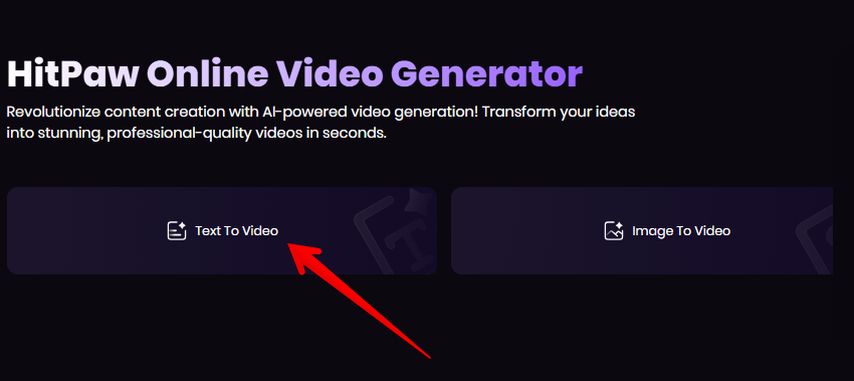
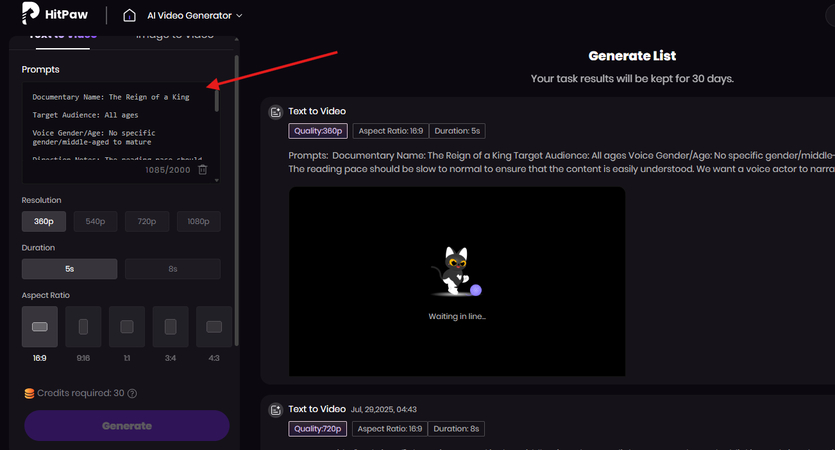
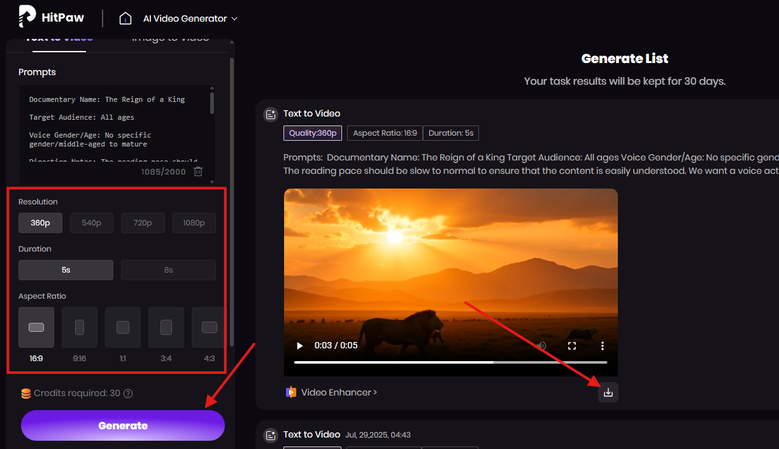
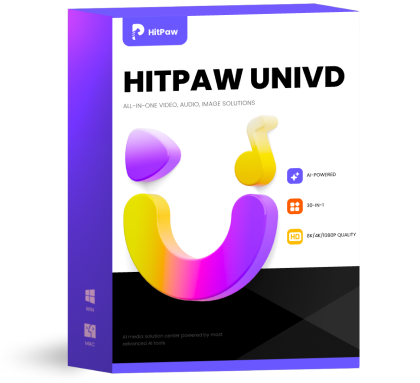
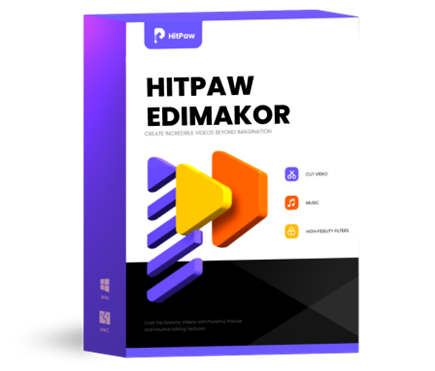




Home > Learn > How to Write a Documentary Script from Scratch
Select the product rating:
Natalie Carter
Editor-in-Chief
My goal is to make technology feel less intimidating and more empowering. I believe digital creativity should be accessible to everyone, and I'm passionate about turning complex tools into clear, actionable guidance.
View all ArticlesLeave a Comment
Create your review for HitPaw articles